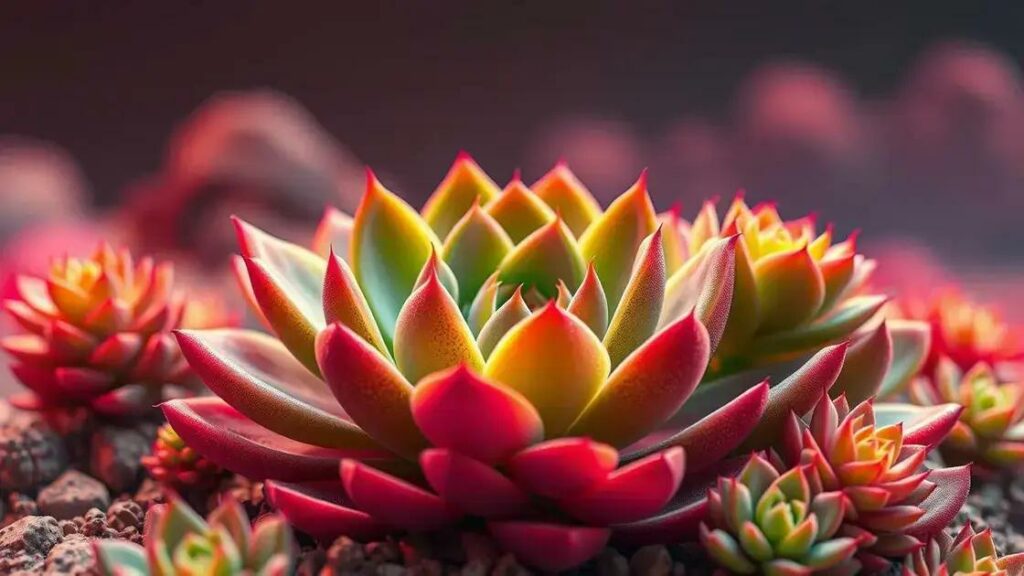How to care for a echeveria plant can be a delightful journey as you nurture these succulents. Discovering the right amount of sunlight, understanding their watering needs, and addressing common issues can make all the difference. By following some straightforward guidelines, you can help your echeveria thrive and showcase its beautiful colors and unique shapes. Explore these insights to become a confident echeveria caretaker!
Table of Contents
ToggleEssential light requirements for echeveria plants
Essential light requirements for echeveria plants are crucial for their health and growth. Proper lighting is the key to ensuring that your echeveria thrives and displays its full potential. These beautiful succulents require bright, indirect sunlight to flourish, and understanding their light preferences can significantly impact your plant care routine.
Understanding light levels for echeveria
- Bright indirect light: Ideal for most echeveria types, they thrive in areas with ample filtered sunlight.
- Direct sunlight: Some echeveria can tolerate a few hours of direct sun, especially in the morning or late afternoon.
- Low light: Prolonged exposure to low light levels can lead to leggy growth and a decrease in vibrant colors.
How to position your echeveria
- Place your echeveria near a south-facing window to maximize light exposure.
- Use sheer curtains to diffuse direct sunlight when needed.
- Rotate your plant every few weeks for even growth on all sides.
Signs of improper lighting
- Stretched growth: If your echeveria becomes tall and spindly, it may be seeking more light.
- Faded colors: Loss of vibrancy can indicate that your plant isn’t receiving enough light.
- Browning leaves: Excessive direct sunlight can cause leaf scorch and browning.
Consider checking out exploring indoor gardening techniques, which can provide deeper insights into lighting for various succulents.
Summary of light requirements
| Light Type | Duration | Effects |
|---|---|---|
| Bright Indirect | 6+ hours | Optimal growth, vibrant colors |
| Direct Morning | 2-3 hours | Healthy, compact growth |
| Low Light | Less than 4 hours | Leggy, pale leaves |
By following these essential light requirements for echeveria plants, you’ll set your succulent up for success, encouraging healthy growth and beautiful blooms.
Best watering practices for your echeveria

Best watering practices for your echeveria are essential for maintaining healthy plants. These mesmerizing succulents require a delicate balance when it comes to moisture. Overwatering can lead to root rot, while underwatering may cause wilting. Understanding how to properly water your echeveria will help ensure its vibrant growth.
Understanding soil moisture needs
Echeveria plants thrive in well-draining soil, which affects how often you should water them. It’s crucial to let the soil dry out completely between waterings.
Steps for effective watering
- Check the soil moisture level: Stick your finger about an inch into the soil. If it feels dry, it’s time to water.
- Water thoroughly: When watering, make sure to soak the soil until you see water draining out of the pot’s drainage holes.
- Allow to drain: After watering, ensure excess water drains away completely to avoid pooling in the pot, which can lead to root rot.
Frequency of watering
- During growing season (spring and summer): Water every 1-2 weeks, depending on humidity and temperature.
- During dormant season (fall and winter): Reduce watering to once every 2-4 weeks as the plant requires less moisture.
For more insights, consider exploring indoor gardening techniques that can further enhance your succulent care knowledge.
Signs of watering issues
| Problem | Symptoms |
|---|---|
| Overwatering | Yellowing leaves, mushy stems, root rot |
| Underwatering | Wrinkled leaves, wilting, dry soil |
By following these best watering practices for your echeveria, you will support its growth and enjoy the beauty that these unique plants bring to your space.
Common problems and solutions for echeveria care
Common problems and solutions for echeveria care are critical to understand for anyone looking to keep their succulent healthy. Many echeveria owners encounter issues that can affect their plants’ vitality. However, with the right knowledge and interventions, you can tackle these challenges effectively.
Identifying and addressing common issues
- Leaf discoloration: Yellowing or browning leaves often indicate problems.
- Solution: Assess your watering habits and adjust light conditions accordingly.
- Stunted growth: A lack of growth can result from inadequate sunlight or nutrients.
- Solution: Ensure your echeveria receives bright, indirect light and consider fertilization.
- Pest infestations: Mealybugs and aphids can harm your plant.
- Solution: Use neem oil or insecticidal soap to treat infestations quickly.
Practical solutions to frequent problems
- Monitor moisture levels: Always check soil dryness before watering to prevent rooting issues.
- Provide adequate light: Move your echeveria to a sunnier location if it shows signs of leggy growth.
- Prune damaged leaves: Remove any dead or damaged foliage to promote healthy new growth.
For deeper insights into echeveria care, consider exploring indoor gardening techniques that can enhance your understanding and capabilities.
Quick reference table for common problems
| Problem | Symptoms | Effective Solution |
|---|---|---|
| Overwatering | Mushy leaves, root rot | Let soil dry completely before next watering |
| Underwatering | Wrinkled, shriveled leaves | Water thoroughly, ensure proper drainage |
| Pest issues | Visible bugs, sticky residue | Treat with neem oil or insecticidal soap |
By identifying and addressing these common problems and solutions for echeveria care, you can maintain a healthy and thriving plant collection.
In conclusion
Caring for echeveria plants requires a mix of knowledge and attention to detail. From understanding their essential light requirements to practicing the best watering techniques and addressing common issues, these steps will help your succulents thrive. Remember, every echeveria is unique, and observing your plants closely will provide clues on how to adjust your care routine. For additional guidance and resources, check out these tips on enhancing your indoor garden.

